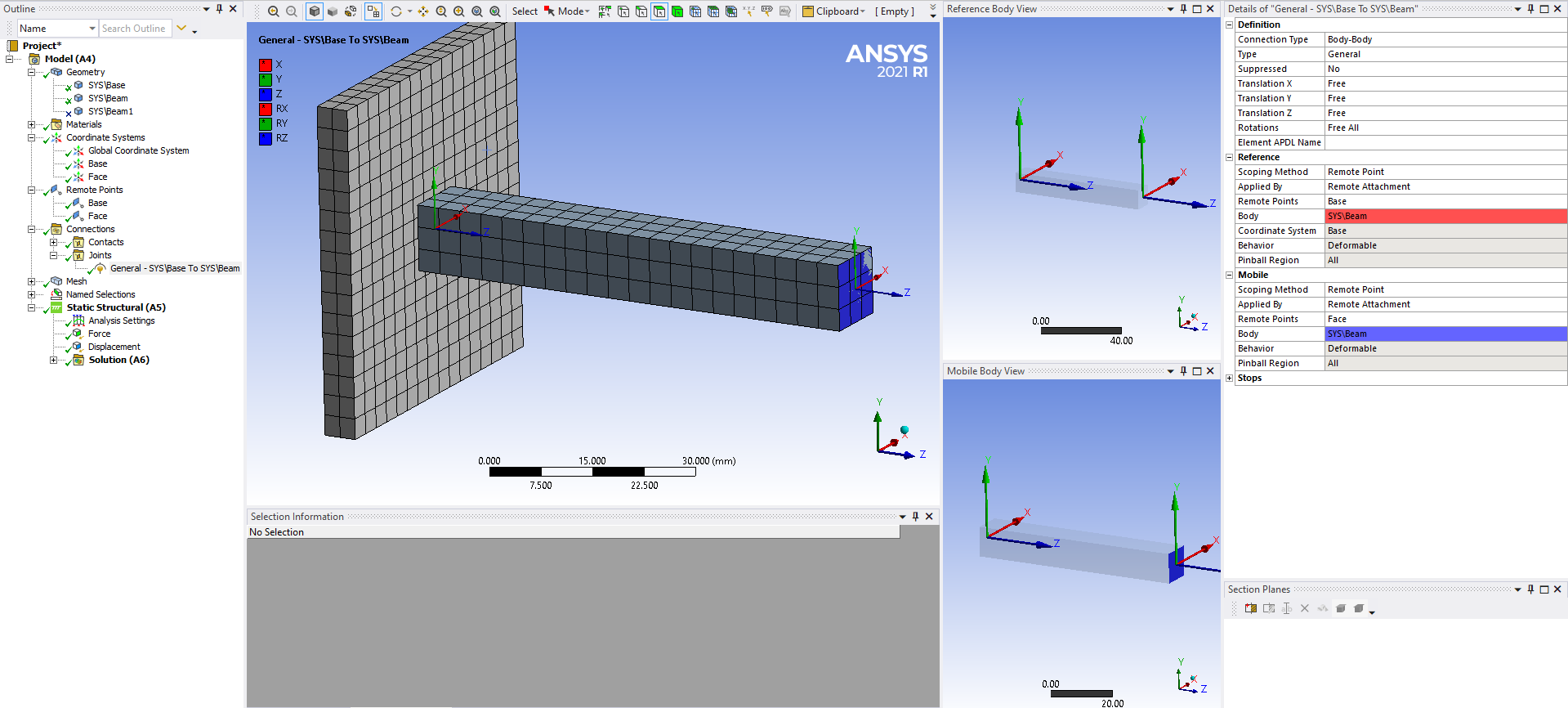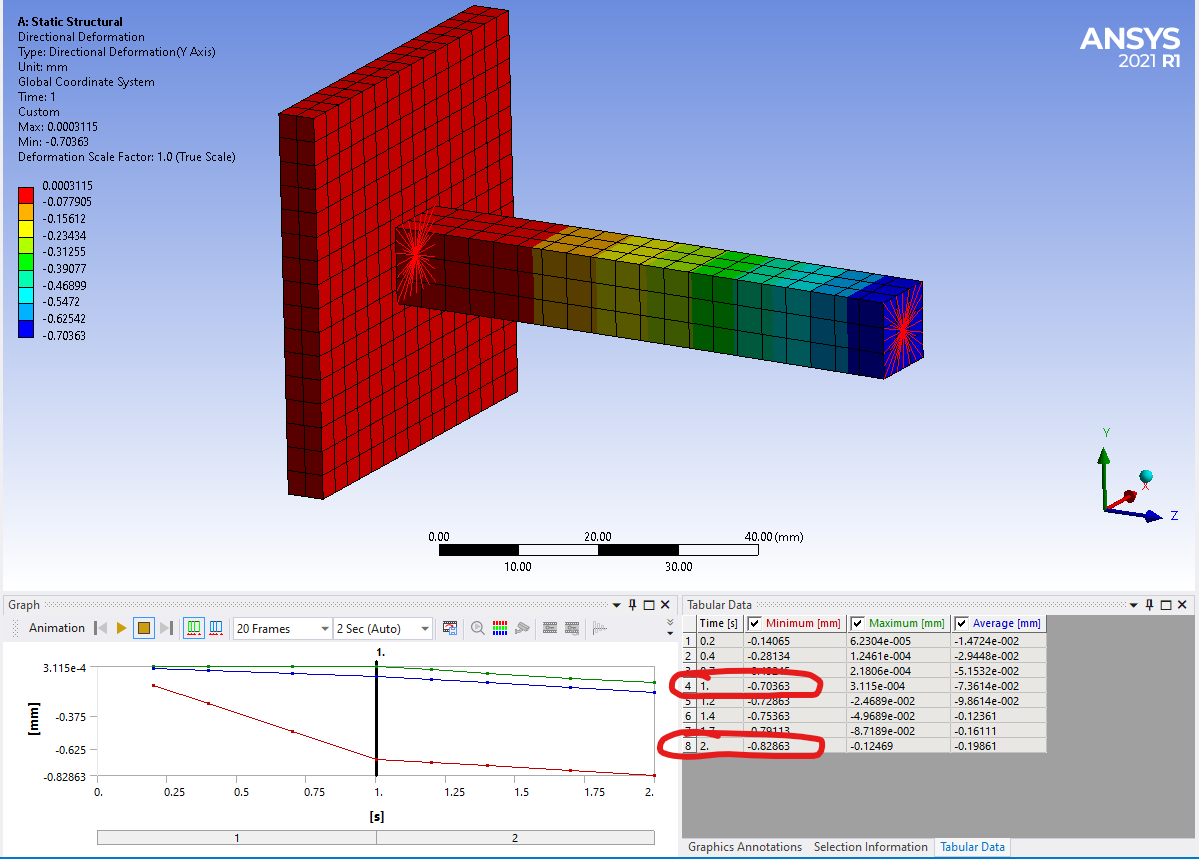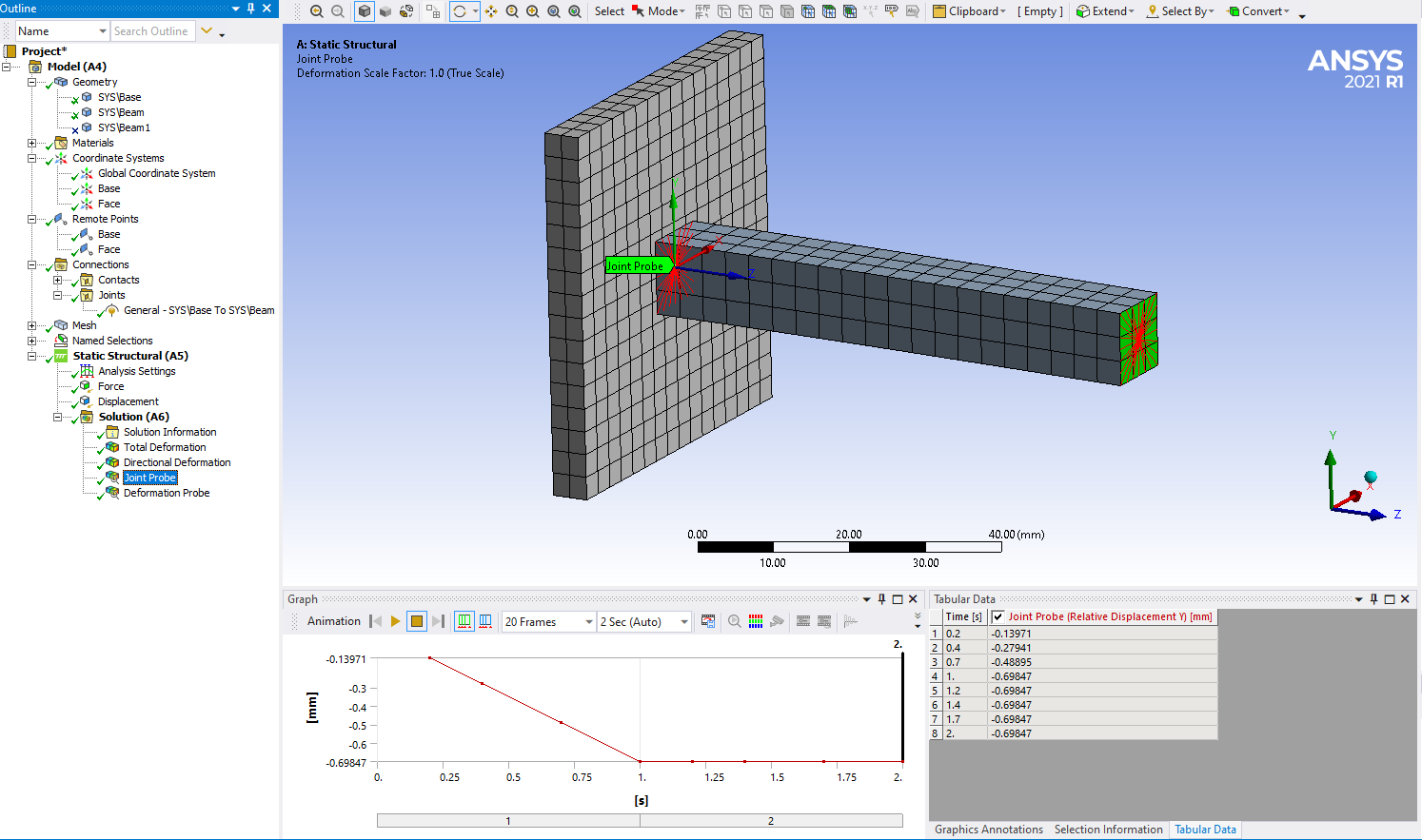-
-
January 11, 2022 at 10:35 pm
nds88
SubscriberHello,
Are there any new techniques that are being used to separate out rigid body motion from strain based deformation to create a relative displacement? There is an app in the ANSYS App store but that is no longer supported for current versions. I tested it and it did not produce a correct result for a cantilever beam with a known translation at the base. I have read some of the PADT blogs about it but I am not very skilled in APDL, so they were not very clear to me.
January 17, 2022 at 1:42 pmAniket
Forum Moderatorare you referring to Extracting Relative Displacements in ANSYS Mechanical ÔÇô PADT, Inc. ÔÇô The Blog (padtinc.com)? I believe there are examples as well.
-Aniket
How to access Ansys help links
Guidelines for Posting on Ansys Learning Forum
January 18, 2022 at 5:37 pmnds88
SubscriberYes, thats the blog. I looked this over and re-worked their examples. One thing I don't understand about this is that for rotations, they are using remote points to get RBE3 constraints, then they are pulling the rotation data from that. This approach doesn't seem to produce a different result from using a remote point and a flexible rotation probe (a native ANSYS probe). Both methods still require the user to either know the area of interest ahead of time, or, resolve the analysis. So, the script they have doesn't seem to add value there.
The script worked for my translational DOF discrepancy on a cantilever model with a moving base. I assume there is no other native ANSYS way to recreate this. I was able to separate out the strain based deflection as predicted by FL^3/3EI . One outstanding issue is that I this result is only in the Global CS. If my component is not aligned to global, then I would have to find a way to rotate my results to match the local CS. Would I take those values and have to manually create a rotation matrix and multiply results by that?
This is the best way, currently, to extract a relative displacement?
January 19, 2022 at 6:31 pmGary_S
Ansys EmployeeThe core functionality that was used in the Relative Displacement ACT extension is being replaced by Ansys DPF or Data Processing Framework.
https://www.ansys.com/training-center/course-catalog/structures/introduction-to-ansys-data-processing-framework
January 20, 2022 at 12:03 amnds88
Subscriber
Thanks Gary. I'm not familiar with that tool. How is it related to finding Relative Displacement? The link describes that it processes user defined data, but it sounds like that still leaves me to have to create a process to get that data somehow.
January 25, 2022 at 8:54 pmnds88
Subscriber
I know this is a common question, but I really am not seeing a lot of information on this topic other than the PADT solution, of which I have some conflicts with using. Is there anything else to add about this?
January 26, 2022 at 6:05 pmGary_S
Ansys EmployeeThe applications in the Ansys App store (such as the Relative Displacement) made use of ACT extensions, which are essentially JScript / Python wrappers around APDL code.
I placed the link to the Ansys DPF so that those who have developed the classic ACTs will begin to migrate their applications to this newer technology.
I am not aware of any similar "Relative Displacement" apps using this new DPF technology.
February 11, 2022 at 8:02 pmnds88
SubscriberI don't know if anyone else is interested in this topic, but as PADT mentions, its a common inquiry.
So, I found a method that works to extract the 6 degrees of freedom as relative displacements (3 rotations, 3 translations). In the test case of a cantilever beam in bending with a translating base, the user can insert a General Joint with all degrees of freedom set to free. Define contacts as usual (for example, a bonded connection between base and beam). Create remote points; one at the connection between bodies and one at the free end (or location of choice). Set the joint to be defined by these remote points. You will need to choose a newly defined coordinate system for these remote points that have 0,0,0 coordinates at the chosen locations. Make sure Joint Behavior is set to deformable. When solve is complete, use Joint Probe for any chosen degree of freedom by the Relative options.
Unfortunately, this does require some pre-planning or resolving but it does allow the user to define the coordinates in which they want their relative results, which PADT's solution does not allow.
Heres the setup:
Time Step 1: Apply end load, F = 1000N (beam geometry: 70mm Length, 10x10mm cross section; structural steel default)
Time Step 2: Apply end load + base displacement of -0.2mm in X and -0.125mm in Y (arbitrary amounts).
 As expected, ANSYS combines those translations of TS2 into the directional deformation. TS1 shows only the strain based deflection (plus some small elastic interaction at the base im assuming since the analytical solution is 0.686mm).
As expected, ANSYS combines those translations of TS2 into the directional deformation. TS1 shows only the strain based deflection (plus some small elastic interaction at the base im assuming since the analytical solution is 0.686mm).
 When using the Joint Probe method as proposed, the analytical solution is constant through all time steps regardless of the base translations that I prescribed from the displacment loading.
When using the Joint Probe method as proposed, the analytical solution is constant through all time steps regardless of the base translations that I prescribed from the displacment loading.

Ideally this method should be able to be used for any geometry, but I would be careful to check a test case. Any degree of freedom should be able to be probed for relative results now.
Any reason this might not be a good solution for Relative Displacements?
Viewing 7 reply threads- The topic ‘Static Structural Relative Displacement’ is closed to new replies.
Ansys Innovation SpaceTrending discussions- The legend values are not changing.
- LPBF Simulation of dissimilar materials in ANSYS mechanical (Thermal Transient)
- Convergence error in modal analysis
- APDL, memory, solid
- How to model a bimodular material in Mechanical
- Meaning of the error
- Simulate a fan on the end of shaft
- Nonlinear load cases combinations
- Real Life Example of a non-symmetric eigenvalue problem
- How can the results of Pressures and Motions for all elements be obtained?
Top Contributors-
3872
-
1414
-
1241
-
1118
-
1015
Top Rated Tags© 2025 Copyright ANSYS, Inc. All rights reserved.
Ansys does not support the usage of unauthorized Ansys software. Please visit www.ansys.com to obtain an official distribution.
-


Ansys Assistant

Welcome to Ansys Assistant!
An AI-based virtual assistant for active Ansys Academic Customers. Please login using your university issued email address.
Hey there, you are quite inquisitive! You have hit your hourly question limit. Please retry after '10' minutes. For questions, please reach out to ansyslearn@ansys.com.
RETRY







